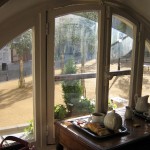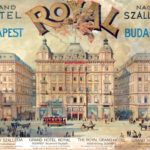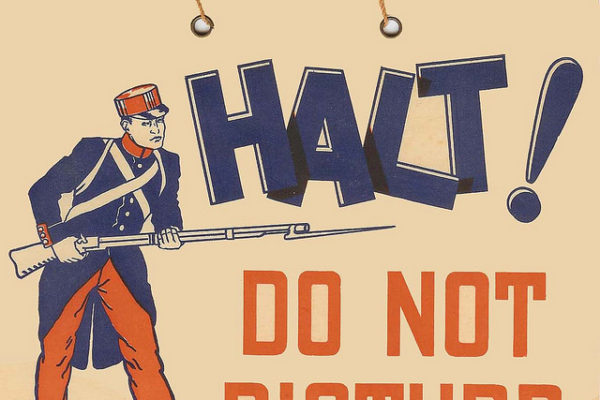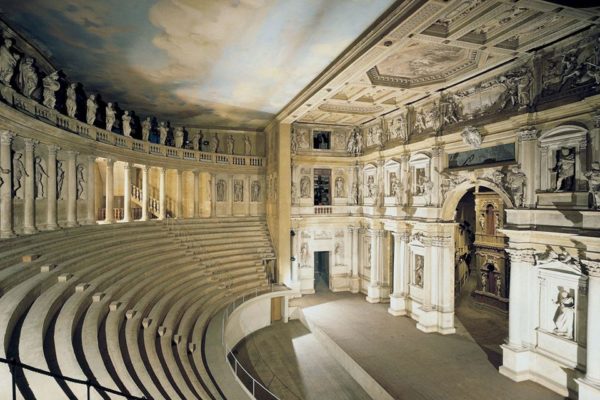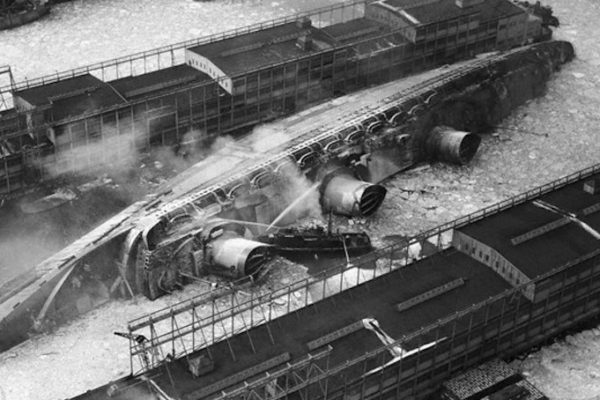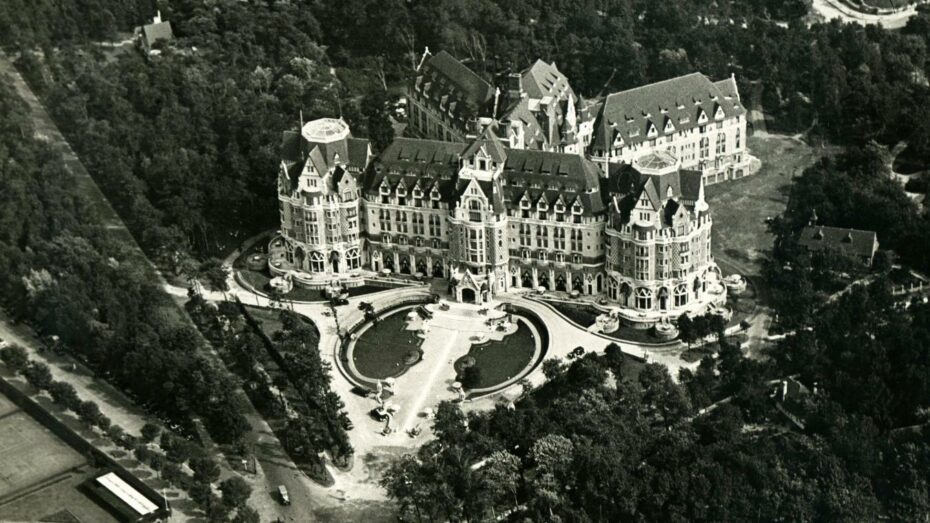
When it was completed in 1929, it was advertised as the most beautiful hotel in the world, with some 500 bedrooms, some with their own swimming pools. But the Royal Picardy was only in operation for about 20 years, was abandoned for 20 more and finally destroyed in 1968. While the space inspired creatives from Cole Porter to P.G. Wodehouse, its developer’s ambitious plans proved to come with a heavy bill, and the global economic crisis and Second World War proved fatal for the hotel. Diving into the history of this doomed but magnificent piece of history provides a glimpse into the glamorous lives of the rich and famous during the fleeting interwar period.
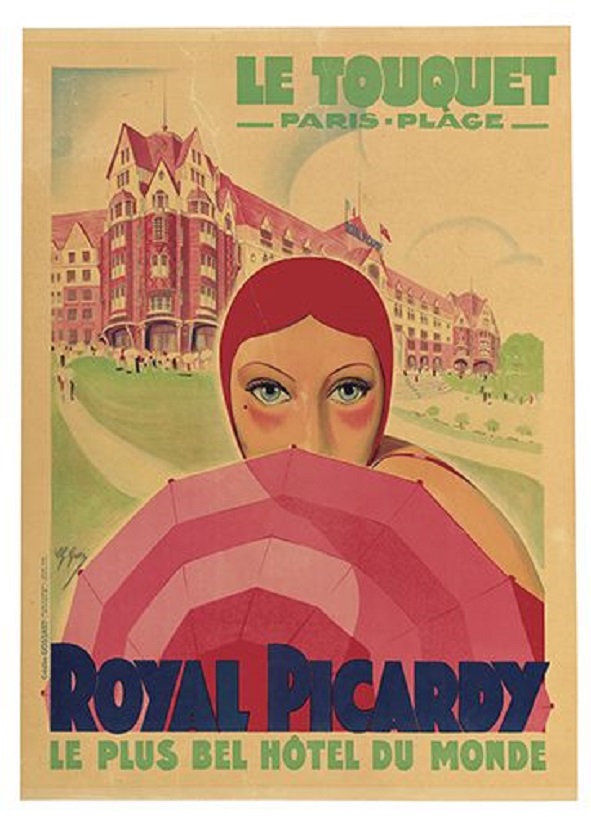
The hotel was located in Le Touquet-Paris-Plage. This beach-side spot was the glamorous French riviera of the north. The English “smart set,” led by playwright Noël Coward, made it their vacation spot de jour, building impressive villas. Sayajirao Gaekwad II, a maharaja owned a house in Le Touquet, and H. G. Wells and Amber Reeves, a British feminist writer, eloped there.
For their grand project, architects Louis Debrouwer and Pierre Drobrec drew from the most regal elements of 15th-century French and English Gothic, with some Flemish and Norman influences. The name was inspired by a famed regiment in King Louis XIV’s army and murals of the soldiers were displayed in the hotel. The main entrance was ad orned with Louis’s motto “Nec pluribus impar,” literally “Superior to everyone.” Seems about right for the Royal Picardy.
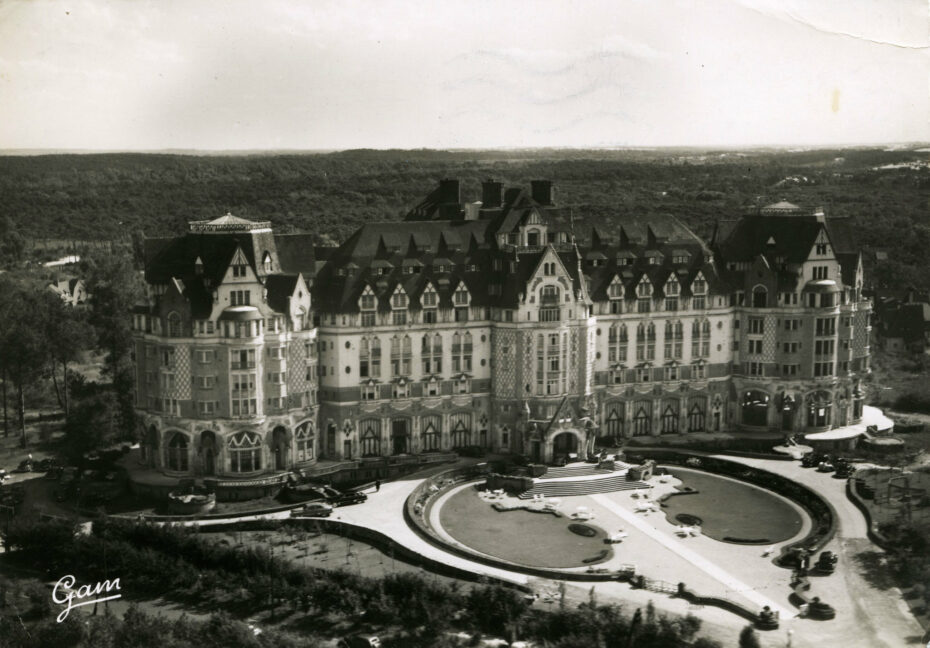
Some 1,200 workers representing 87 different trades worked on the 9-floor building. The 50 apartments had 5 to 10 rooms, featuring a master bedroom, lounge, a kitchen and a room for the butler or maid. But the bad timing of the global financial crisis caused an initial crisis for the just-finished (or not-quite -finished) hotel, whose owners filed for bankruptcy early on into the venture. Despite the hotel’s initial popularity after it opened in August 1929, it came with staggering operating costs, and the top floors of the hotel remained closed to guests. Lace curtains were hung in the windows of the top floors and lights remained on in unfinished rooms to give the impression from the outside that all was well. But just four years in, the owners were forced to close in 1931. After six months of trying unsuccessfully to sell their property (1,000,000 francs for the hotel and 100,000 for the restaurant and bar), they eventually decided to reopen to get back some of their investment. And to their surprise, the global elite began flocking in droves.
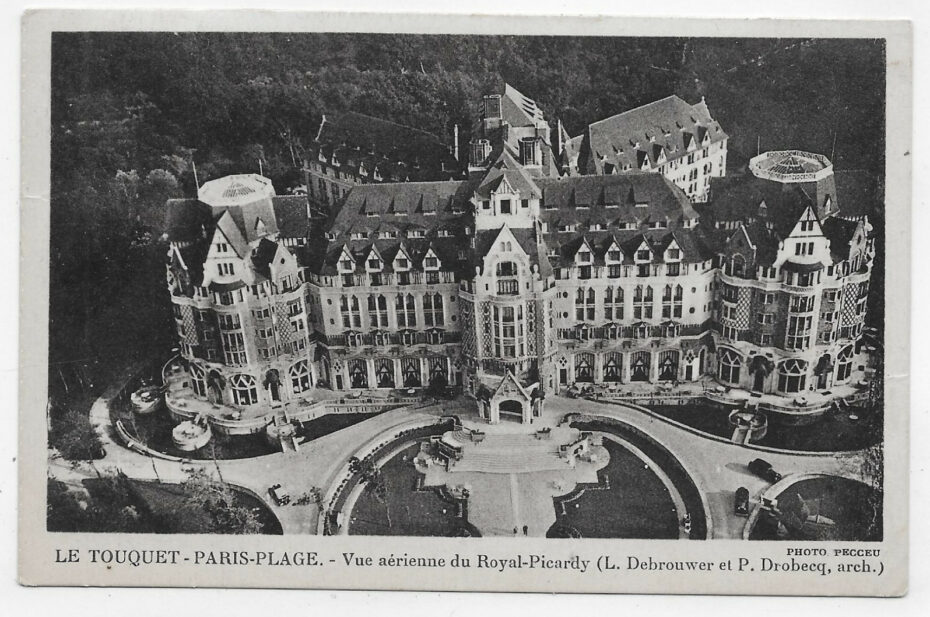
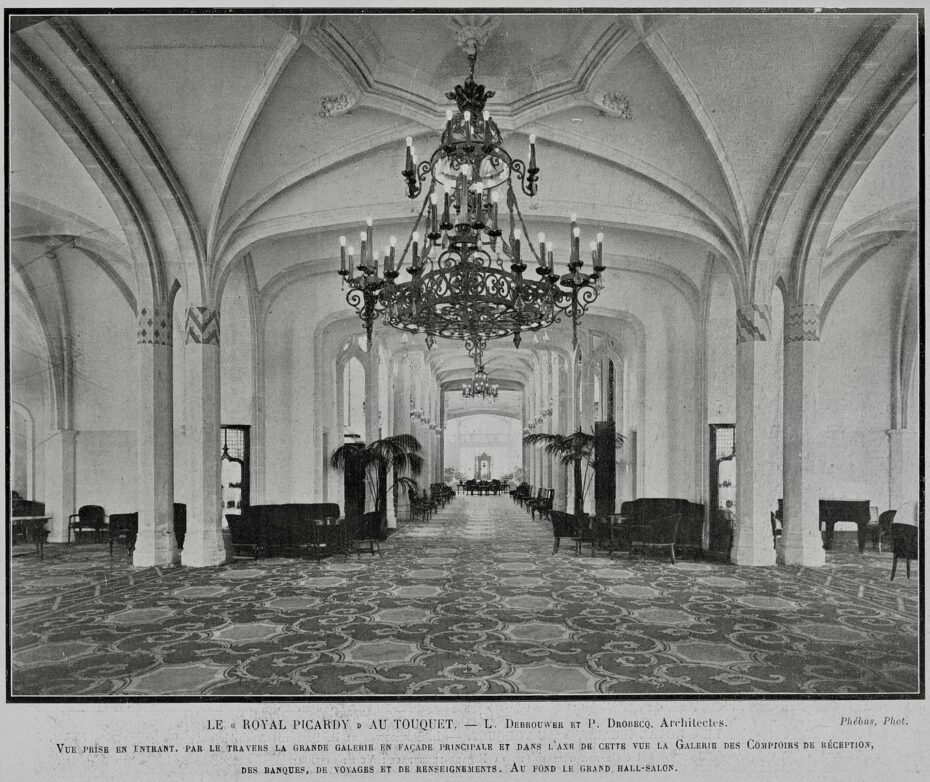
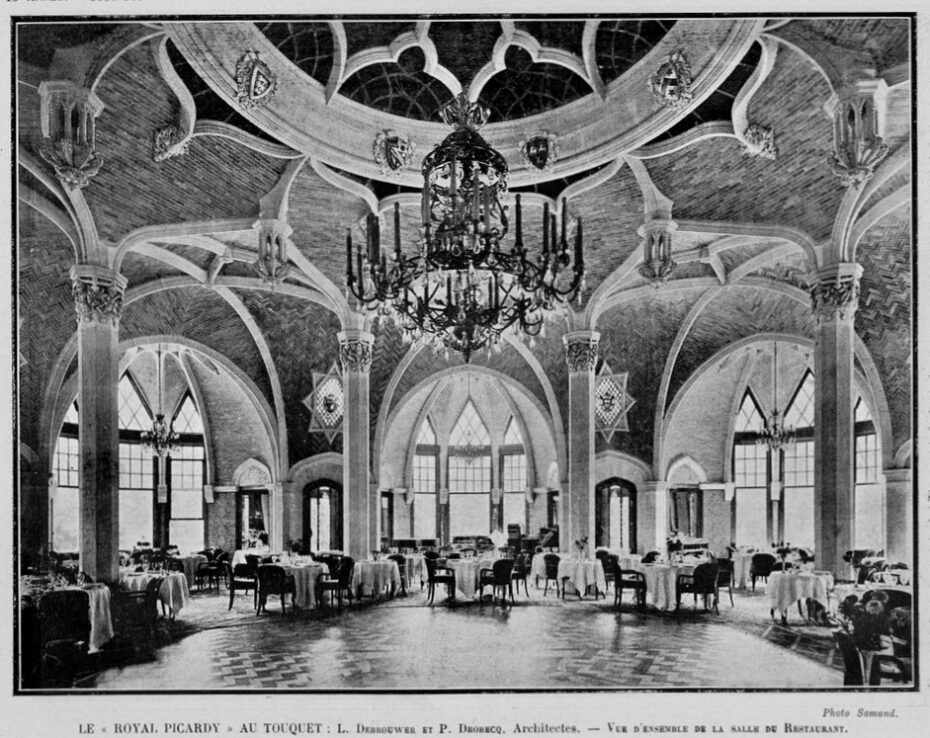
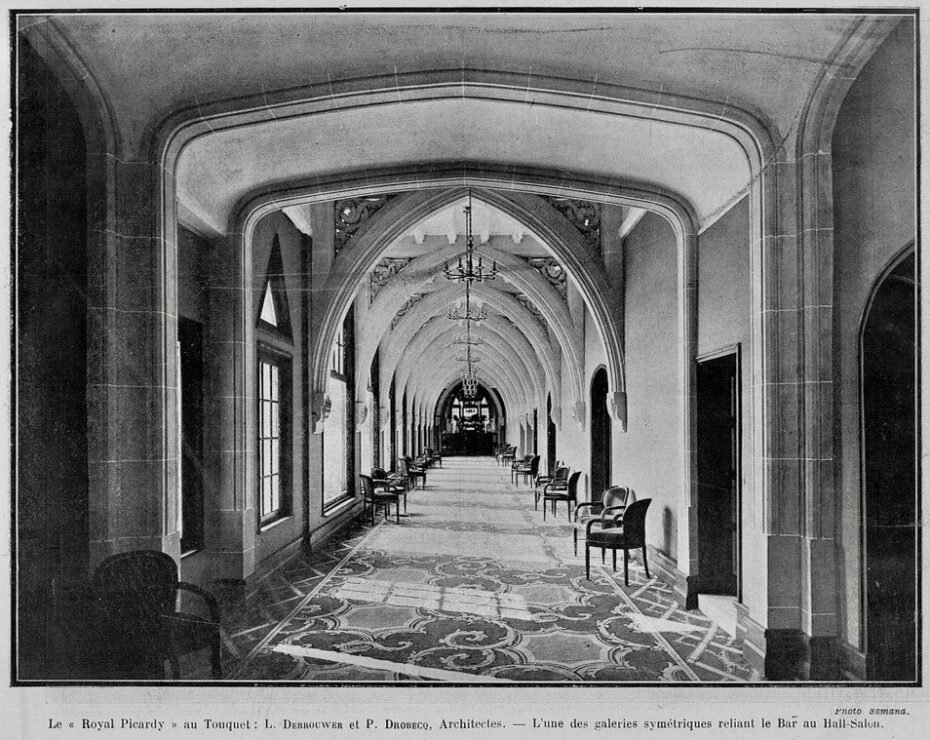
The Picardy was one of seven hotels in France categorized as “hors classe” (“first class”) during this period. (Only one of those, the Hotel Westminster, also in Le Touquet, is still in operation.) The menu of leisure offered by the hotel was extensive for the time, including a hammam, state-of-the-art gym (plus mini golf and a squash ground) and modern amenities like the heated 23-meter pool and phones in all the rooms. And it was ready to greet the masses: The garage could accommodate 100 cars and in addition to bars and restaurants, there were some 120 lounges. All this was surrounded by a 6-hectare private park for guests to explore.
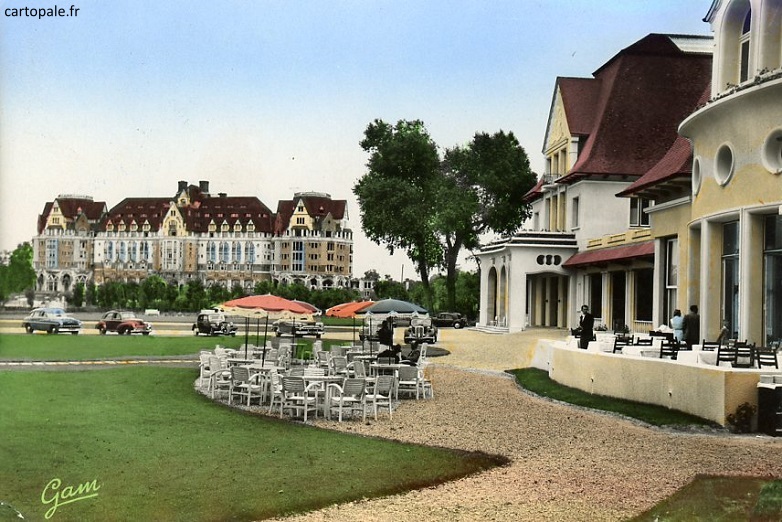
Among the rich and famous guests included the Prince of Wales, prolific English writer P.G. Wodehouse (who created the “idle rich” gentleman Bertram Wilberforce Wooster character and his valet Jeeves). While at the Royal Picardy, Wodehouse worked with playwright Guy Bolton, who was known for his musical comedies, on a collection of short stories, including one that would end up being the inspiration for the movie “Anything Goes.” The story focuses on a love triangle aboard an ocean shipper heading from New York to London. It features music by Cole Porter, another of Hotel Picardy’s guest.
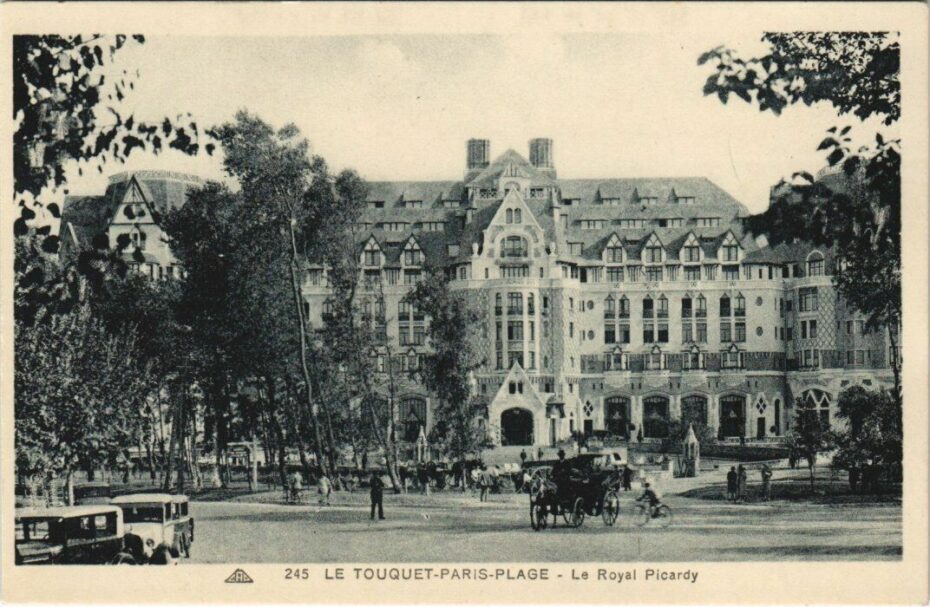
Porter in fact wrote the music for “Anything Goes” at the swanky casino across the road. This same gambling hot spot inspired Ian Fleming, who stayed at Le Westminster, and the Casino Royale story in the James Bond saga. (The fictional northern French town where the book and other Bond stories take place, Royale-les-Eaux, is clearly similar to Le Tourquet-Paris-Plage.)
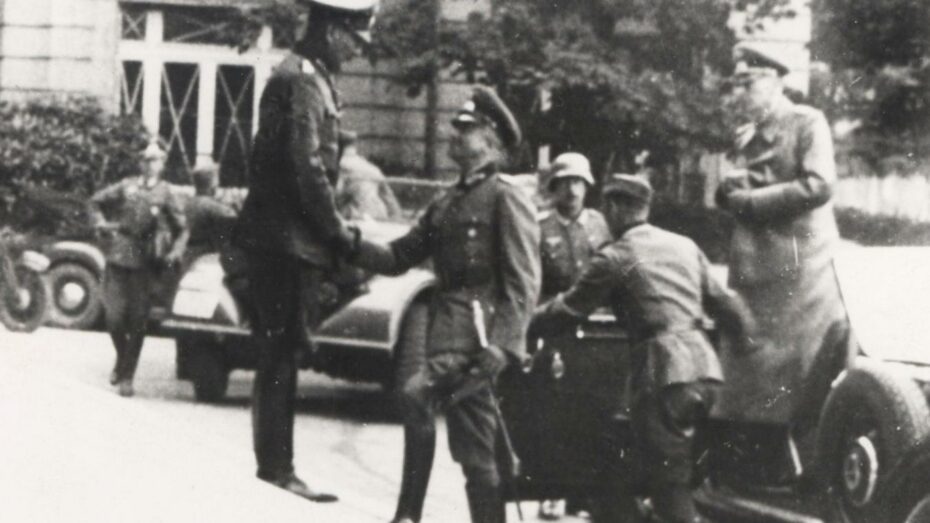
But it doesn’t take fiction to imagine how global geopolitics would shape the history of the Royal Picardy. Its proximity to the northern French frontline meant that when fighting broke out, it was a valuable asset, in addition to the fact that it could host a large number of soldiers. The hotel was eventually taken over by the German Army and it’s said that Adolf Hitler himself held a conference there. While the hotel survived multiple bombings, after the war ended, that beautiful swimming pool now had mines floating in it and bunkers had been built in the expansive private park.
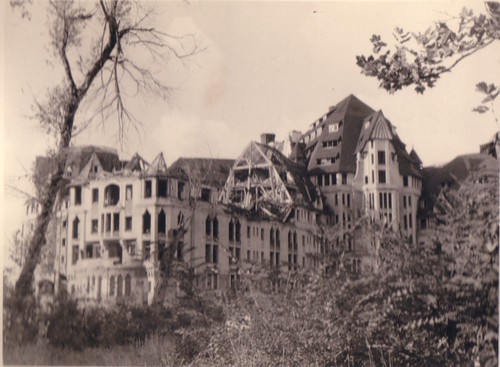
Now, there were only 86 rooms compared to the 1,000 it originally had, and the hotel closed unceremoniously in 1951. There had been an initial hope of using war reparations and funding from the American Marshall Plan to transform the hotel into an international secondary school (named after President Franklin D. Roosevelt) for American soldiers wishing to stay in Europe. But the local population was not enthusiastic about the proposal. Instead, the town purchased what remained, which was left undisturbed for decades until it was destroyed in 1968.
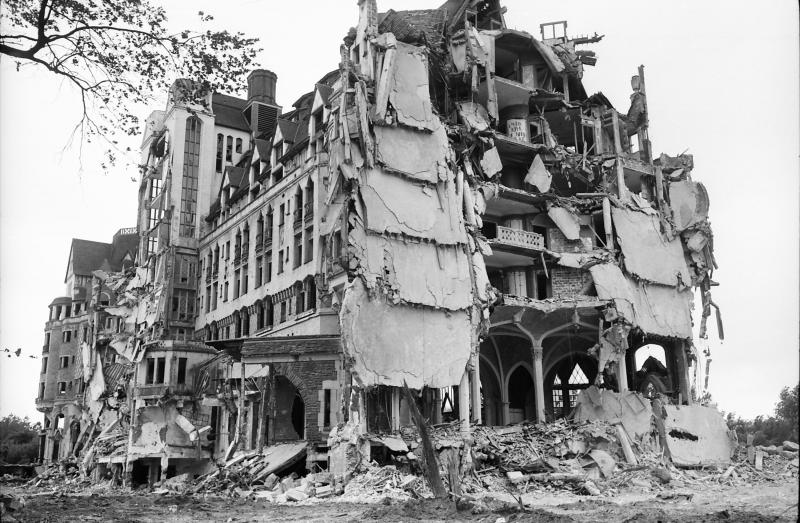
A school was eventually built in its spot, opening in 1972. Just before its demolition in the 1960s, a British television crew captured this fallen giant of 1920s glamour in the eerie final stages of decay, before its fate was sealed…


